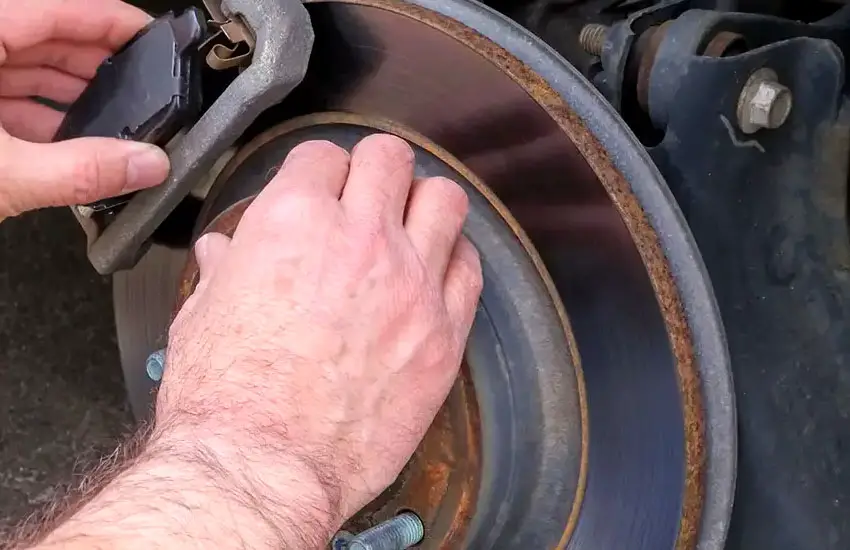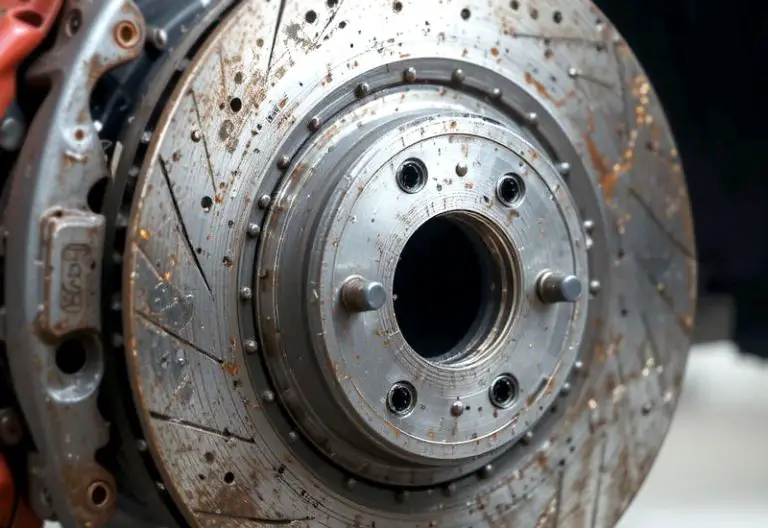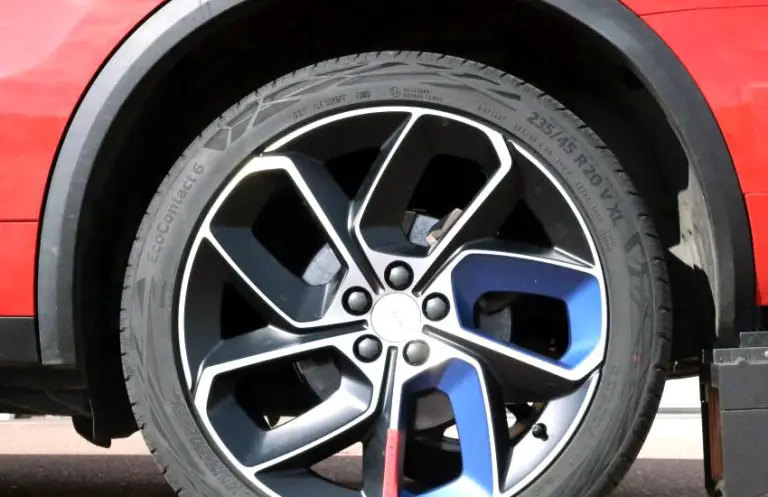When it comes to vehicle maintenance, one of the most critical components we often overlook is the brake pads. They play a vital role in ensuring our safety on the road. But have you ever wondered how age affects brake pads? Do they deteriorate simply because they get old, or is it the mileage and driving habits that cause them to wear out? Let’s dive deep into understanding whether brake pads worsen with age and what factors influence their longevity.

Understanding How Brake Pads Work
To grasp how age might affect brake pads, it’s essential to first understand their role and function. Brake pads are a part of the braking system, which is crucial for vehicle safety. They press against the brake rotors to create friction, which slows down and eventually stops the car. This friction generates a lot of heat, which means brake pads are made from materials designed to withstand high temperatures and wear over time.
Materials Used in Brake Pads
Brake pads are made from several different materials, each with its properties and advantages. The most common types are:
- Organic Brake Pads: Made from materials like glass, rubber, and resins, these pads are softer and quieter but wear out faster.
- Metallic Brake Pads: Comprising metals like iron, copper, and steel, these are durable and perform well under high heat but can be noisy.
- Ceramic Brake Pads: Known for their longevity and quiet operation, ceramic pads are made from ceramic fibers and other materials, offering a balance of performance and durability.
Each type of brake pad reacts differently to aging and wear, which is why understanding their composition is crucial when discussing how they deteriorate over time.
How Brake Pads Wear Out
Brake pads naturally wear down as they are used because the friction material gradually gets consumed every time you apply the brakes. The rate at which this happens depends on various factors, including driving habits, the type of brake pads, and the conditions in which you drive. However, even if your car is sitting idle, brake pads can still degrade.
Factors Influencing Brake Pad Deterioration
There are several factors beyond just the age of the brake pads that can contribute to their wear and tear. Let’s explore these in detail.
Driving Habits and Conditions
How and where you drive significantly impacts the lifespan of your brake pads. Here’s how different driving conditions can affect them:
- City Driving: Involves frequent stopping and starting, which can wear out brake pads faster due to the constant use of brakes.
- Highway Driving: Generally easier on brake pads since there’s less frequent braking involved.
- Aggressive Driving: Hard braking, speeding, and quick acceleration can cause brake pads to wear out more rapidly.
- Weather Conditions: Wet or salty conditions (such as driving in snowy areas where roads are salted) can lead to corrosion and faster wear of brake pads.
Vehicle Type and Usage
The type of vehicle and how you use it also play a role in brake pad wear. For instance:
- Heavy Vehicles: Trucks and SUVs, which are heavier, tend to wear out brake pads quicker than lighter vehicles like sedans.
- Towing: If you frequently tow heavy loads, it puts extra stress on the brakes, causing the pads to wear out faster.
- Performance Vehicles: High-performance cars, which are driven aggressively, often have brake pads that need to be replaced more frequently.
Quality of Brake Pads
Not all brake pads are created equal. Higher-quality brake pads may cost more but often last longer and perform better. Cheaper brake pads might save you money upfront but could wear out faster, leading to more frequent replacements.
Maintenance and Care
Regular maintenance can extend the life of your brake pads. This includes:
- Routine Inspections: Regularly checking the thickness of your brake pads can help you replace them before they wear out completely, which can damage other parts of the braking system.
- Proper Installation: Ensuring that brake pads are installed correctly can prevent uneven wear and prolong their lifespan.
- Brake Fluid: Keeping your brake fluid clean and at the proper level can help your brakes function efficiently, reducing wear on the pads.
Do Brake Pads Age Even When Not Used?
Now that we’ve discussed the various factors that influence brake pad wear, let’s address whether brake pads worsen simply with age, even if the vehicle is not driven much.
The Impact of Time on Brake Pads
Over time, brake pads can deteriorate due to environmental factors and material degradation. Here are a few ways this can happen:
- Moisture: If a vehicle is stored in a damp environment, moisture can seep into the brake pads, causing them to degrade and lose effectiveness.
- Temperature Fluctuations: Extreme temperatures, whether hot or cold, can affect the materials in brake pads, causing them to harden or become brittle over time.
- Corrosion: Metal components within the brake pads can corrode if exposed to moisture and air for extended periods, reducing their effectiveness and lifespan.
Signs of Aging Brake Pads
Even if you haven’t driven your vehicle much, it’s important to check for signs that your brake pads might be aging. These signs include:
- Cracks or Fractures: Visible damage to the brake pad surface can indicate that they are deteriorating.
- Hardening: If the brake pads feel unusually hard, they may have become less effective due to aging.
- Noise: Unusual sounds such as squeaking or grinding can indicate that the brake pads are no longer in good condition.
How Long Do Brake Pads Last?
The lifespan of brake pads can vary widely based on the factors discussed above. On average, brake pads can last anywhere from 30,000 to 70,000 miles. However, if a vehicle is not driven much and is stored properly, the brake pads can last longer, although it’s still recommended to inspect them regularly.
When to Replace Brake Pads
Knowing when to replace brake pads is crucial for maintaining vehicle safety. Here are some guidelines to help you determine the right time for replacement:
- Mileage: Check the manufacturer’s recommendations for your specific vehicle. Most suggest replacing brake pads every 30,000 to 70,000 miles.
- Thickness: If the brake pads are less than 1/4 inch thick, it’s time to replace them.
- Performance: If you notice a decrease in braking performance, it could be a sign that the brake pads are worn out.
Maintaining Brake Pads for Longevity
To ensure your brake pads last as long as possible, it’s important to practice good maintenance habits and be mindful of your driving style.
Regular Inspections
Regularly inspecting your brake pads and the entire braking system can help catch any issues before they become serious problems. Look for signs of wear, such as thinning pads, cracks, or any changes in braking performance.
Smooth Driving
Adopting a smooth driving style can significantly extend the life of your brake pads. This includes:
- Gradual Braking: Instead of slamming on the brakes, try to brake gradually.
- Avoiding Heavy Loads: When possible, avoid carrying heavy loads that put extra stress on your brakes.
- Maintaining a Safe Following Distance: This reduces the need for sudden stops.
Quality Brake Pads
Investing in high-quality brake pads can save you money in the long run by reducing the frequency of replacements. Quality pads are made from better materials and designed to last longer and perform better under various conditions.
Proper Storage
If your vehicle will be sitting unused for an extended period, ensure it is stored in a dry, temperature-controlled environment to prevent moisture and temperature damage to the brake pads.
Professional Maintenance
Having your brake system checked by a professional mechanic at regular intervals ensures that any issues are identified and addressed early. Mechanics can also provide valuable advice on maintaining your brake pads and other components of your braking system.
I hope this detailed exploration has provided you with a better understanding of how brake pads wear out over time and the factors that contribute to their deterioration. Whether it’s due to driving habits, environmental conditions, or simply the passage of time, brake pads do worsen with age. Regular maintenance, proper driving habits, and using high-quality brake pads can help extend their lifespan and keep your vehicle safe on the road.
Are These Questions in Your Mind?
Is it normal for brake pads to wear out faster in city driving?
Yes, city driving involves frequent stopping and starting, which can cause brake pads to wear out faster compared to highway driving.
Can aggressive driving shorten the life of my brake pads?
Absolutely. Hard braking, rapid acceleration, and high speeds can lead to quicker wear and tear on your brake pads.
Do I need to replace brake pads even if my car is not driven much?
Yes, brake pads can deteriorate over time due to environmental factors and should be inspected regularly even if the vehicle is not driven often.
Is it possible for brake pads to harden over time?
Yes, brake pads can harden over time, especially if exposed to extreme temperatures, which can reduce their effectiveness.
Can moisture damage brake pads?
Yes, moisture can cause brake pads to degrade and corrode, especially if the vehicle is stored in a damp environment.
Do ceramic brake pads last longer than organic ones?
Typically, yes. Ceramic brake pads are known for their durability and longer lifespan compared to organic brake pads.
Is it safe to drive with worn-out brake pads?
No, driving with worn-out brake pads is unsafe and can lead to brake failure, increasing the risk of accidents.
Can towing a trailer affect my brake pads?
Yes, towing heavy loads puts extra stress on the braking system, causing brake pads to wear out more quickly.
Is it necessary to replace all brake pads at the same time?
While not always necessary, it’s often recommended to replace all brake pads simultaneously to ensure balanced braking performance.
Do I need to use the same type of brake pads that came with my car?
It’s best to use the type of brake pads recommended by the manufacturer, but you can upgrade to higher-quality pads for better performance and longevity.


